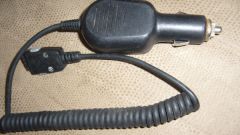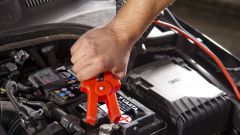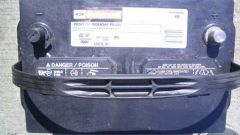Instruction
1
For vehicle operation are often used acid batteries, i.e. those in which the electrolyte is a sulfuric acid solution in distilled water. Therefore, the technical condition of the battery can be monitored with a hydrometer. It allows you to determine the density of the electrolyte. If it is high - the battery is charged, low – low.
For this purpose you can use the load plug, which shows the voltage of the entire battery or each individual "banks". According to her testimony, you can determine the battery is charged or not, and how stable the voltage.
As soon as it becomes clear that the battery requires recharging, the question arises: "How to do it?" Currently, to purchase the charging device in the store no problem, but if you accidentally on a shelf in the garage gathering dust and AC transformer, step-down the voltage from 220V to 16V, then the issue can be resolved without the store.
For this purpose you can use the load plug, which shows the voltage of the entire battery or each individual "banks". According to her testimony, you can determine the battery is charged or not, and how stable the voltage.
As soon as it becomes clear that the battery requires recharging, the question arises: "How to do it?" Currently, to purchase the charging device in the store no problem, but if you accidentally on a shelf in the garage gathering dust and AC transformer, step-down the voltage from 220V to 16V, then the issue can be resolved without the store.
2
In addition to the transformer you will need:
• conventional wire rheostat to adjust the force of the charging current;
• ammeter to control the magnitude of the charging current;
• rectifier device;
• the switch included in the circuit of the primary winding of the transformer;
• light bulb included in the circuit of the secondary winding. Once in the secondary winding of the transformer voltage appears, she lights up.
• conventional wire rheostat to adjust the force of the charging current;
• ammeter to control the magnitude of the charging current;
• rectifier device;
• the switch included in the circuit of the primary winding of the transformer;
• light bulb included in the circuit of the secondary winding. Once in the secondary winding of the transformer voltage appears, she lights up.
3
Rectifier device do themselves, gathering of the diode rectifier bridge. All the device mount onto a base made of a dielectric material (textolite, plywood, non-melting non-conductive plastic). Based on secure the transformer.
4
From the same material assemble building, which make a lot of holes for cooling of the transformer and rectifier device.
On the front wall of the housing fasten the control lamp of inclusion, switch, ammeter, rheostat.
Output wires from the rectifier device preferably equipped with terminals of different diameter so that when the connection to the battery do not reverse the polarity.
On the front wall of the housing fasten the control lamp of inclusion, switch, ammeter, rheostat.
Output wires from the rectifier device preferably equipped with terminals of different diameter so that when the connection to the battery do not reverse the polarity.
5
Checking compliance with these mandatory conditions, plug the charger into the network, connect the terminals to the battery and rheostat install the required charging current. The value of a control on readings of the ammeter.
Note
In the room where charging the battery, be sure to provide good ventilation. In the process of charging the electrolyte produces hydrogen and its accumulation, even from a spark, may burst.
During the operation of charging the battery be sure to remove the batteries drain holes. Otherwise allocated when charging gas can accumulate under the battery cover, resulting in a possible fit of the case.
During the operation of charging the battery be sure to remove the batteries drain holes. Otherwise allocated when charging gas can accumulate under the battery cover, resulting in a possible fit of the case.



